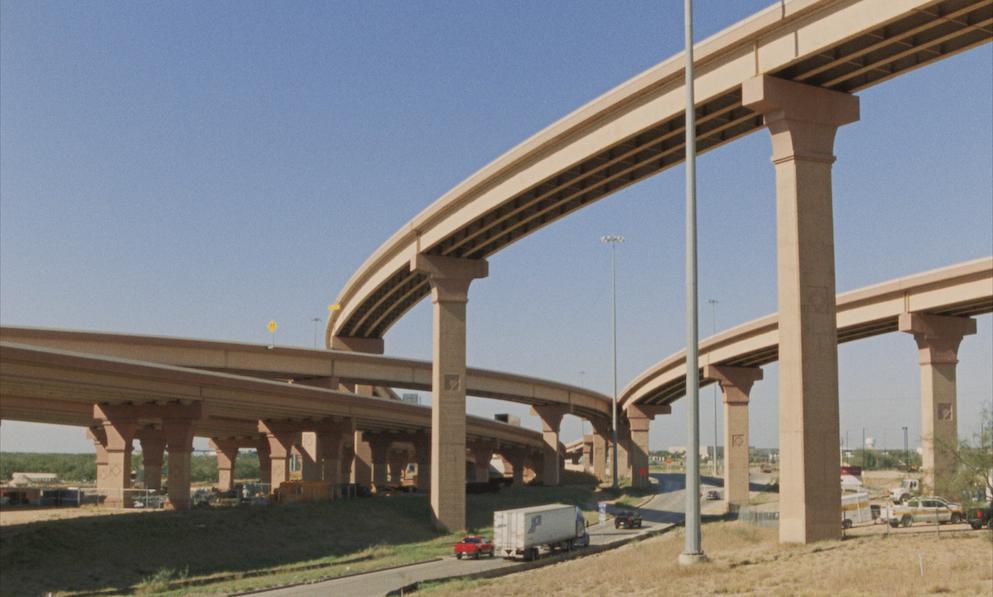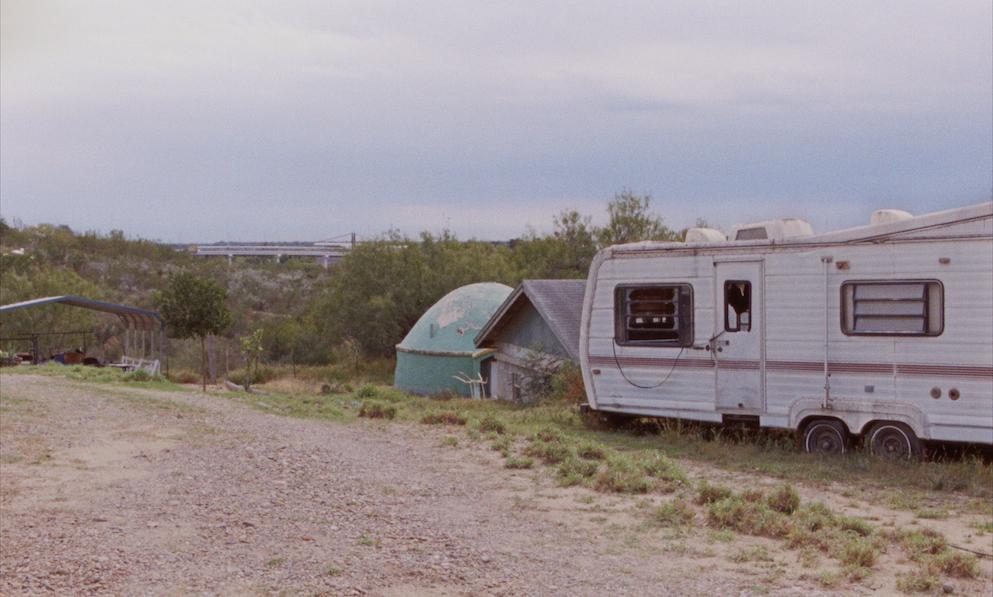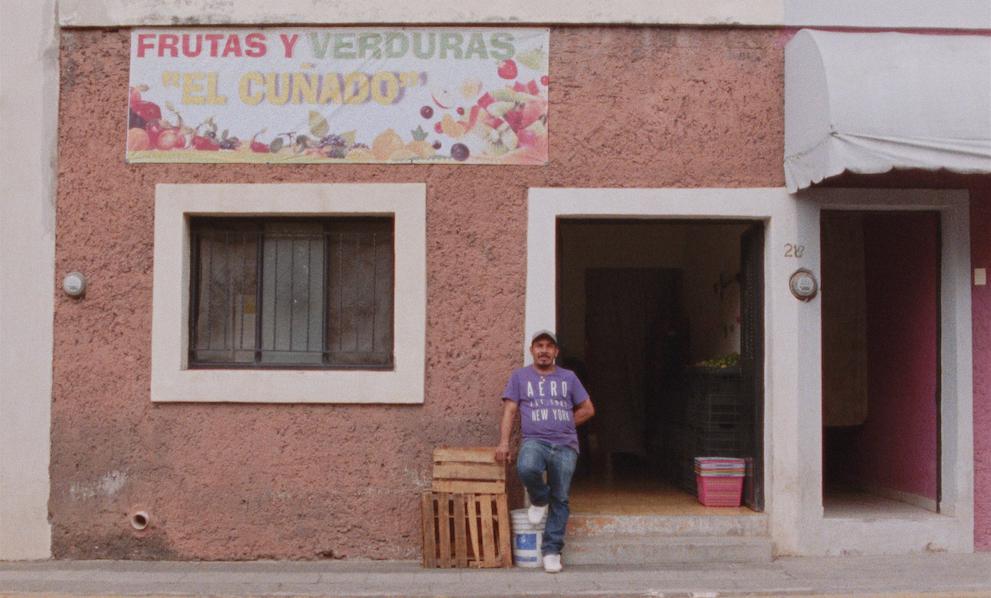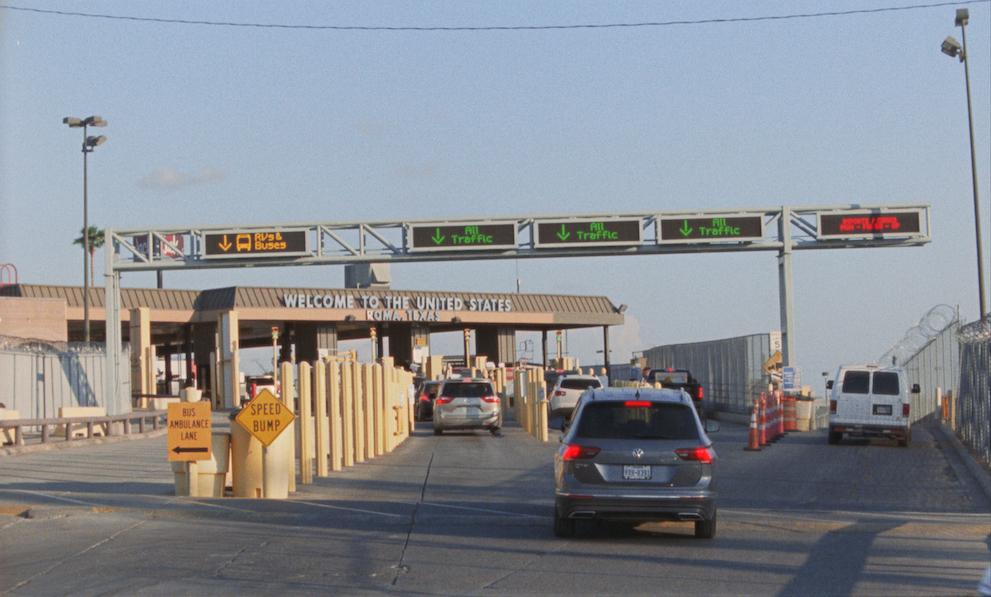Those Next to Us
On July 22, 2017, in a Walmart parking lot, Texas police discovered a truck with three dozen illegal immigrants in the back. A smuggler was supposed to bring them from the US-Mexico border town of Laredo to San Antonio. During the hours-long trip without any fresh air, water, or air conditioning of any kind, eight people died and two more later succumbed to dehydration at the hospital. In Those Next to Us, the course of events is narrated offscreen by one of the survivors, Germán López Rosales. The film juxtaposes the harrowing descriptions with long, static shots of the locations: the riverbed of the Rio Grande; residential areas that served as hiding places before departure; Interstate 35, which runs from Laredo to Minnesota via San Antonio, Dallas and Kansas City; the Walmart parking lot. All of these landscapes appear harmless, peaceful, almost beautiful in their unspectacular quality. What can the viewer’s gaze latch onto when hearing the incomprehensible? What clues point to the horror behind the façade of the banal? The events described stand outside of representation. What remains are places of emptiness, places without memory. So it seems only logical that Bernhard Hetzenauer’s perfectly composed pictures are entirely lacking one thing: human faces. Only in the last shot of the film can López Rosales be seen, having survived his ordeal, now leaning confidently at the entrance to his fruit and vegetable shop, which he presumably opened after being deported back to Mexico. His story breaks through the previous invisibility, showing two things: the brutality of the business of migration, and the illusion of the impermeability of militarized borders in a world of social inequalities. (Florian Wüst)
Translation: John Wojtowicz
Those Next to Us
2023
Austria, Germany, Mexico, Switzerland
30 min




